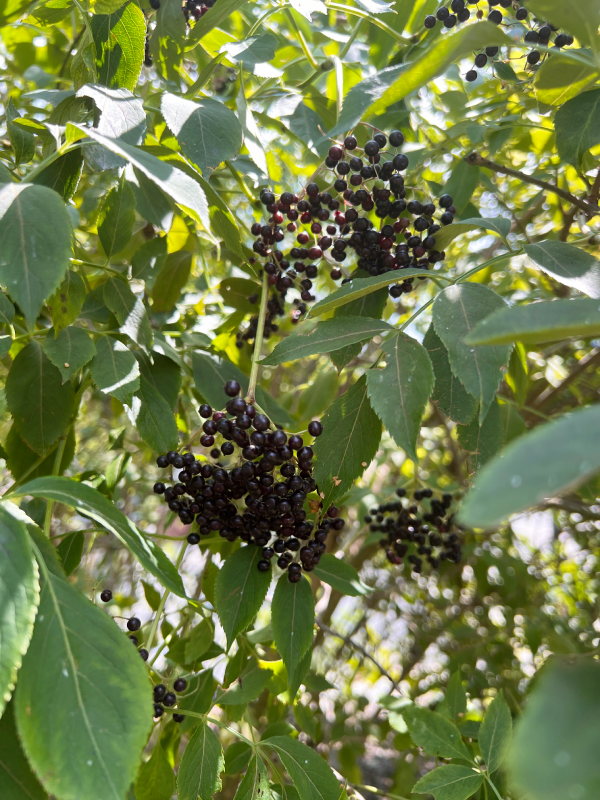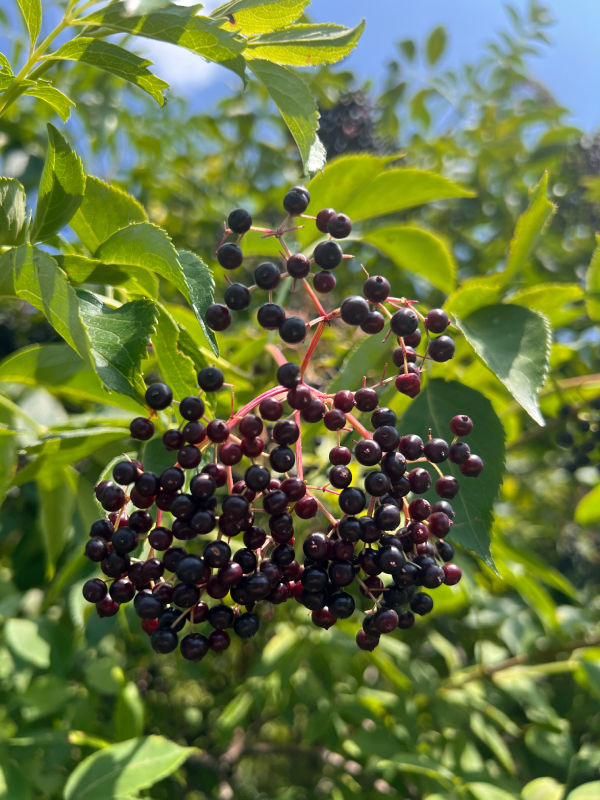
August 02, 2024| Education, Environment
By: Laurie Kane
This week's buzzworthy bloom is actually a buzzworthy berry!
Our American elderberry (Sambucus Canadensis) bushes have gotten much larger this year and are currently covered with fruit. The American elderberry is a native shrub which can reach grow up to 12' high and will spread over time. Because of these characteristics, it makes an effective privacy screen or windbreak on your property. Large white flowers bloom in June and July, giving way to drooping clusters of small black berries in July and August. The flowers provide nectar for butterflies and other insects. Ripe berries are eaten by birds such as robins, bluebirds, catbirds, and cardinals, as well as small animals like squirrels and turtles.
 |
 |
| Elderberry Bush | A Cluster of Elderberries |
The American elderberry is generally considered a deer-resistant plant although deer may browse on them if they get hungry enough. Native Americans used various parts of the shrub for both medicinal purposes and food. Elderberry is used today in jellies and jams, pies, tea, syrup, wine, and even dumplings. The fruit of the elderberry has received recent attention because it contains antioxidants. The botanical name for the American elderberry is Sambucus canadensis, which comes from the Greek word “sambuce” meaning musical instrument. Old elderberry stems can easily be hollowed out to create a flute or whistle! A fun and easy plant to grow, you may wish to add it to your garden.
We invite you to visit our native plant gardens at 125 Landing Road, Landing, NJ, to see these buzzworthy blooms (or berries!) firsthand. We hope you will be inspired to incorporate native plants into your yard or garden, supporting local wildlife and contributing to a healthier environment!